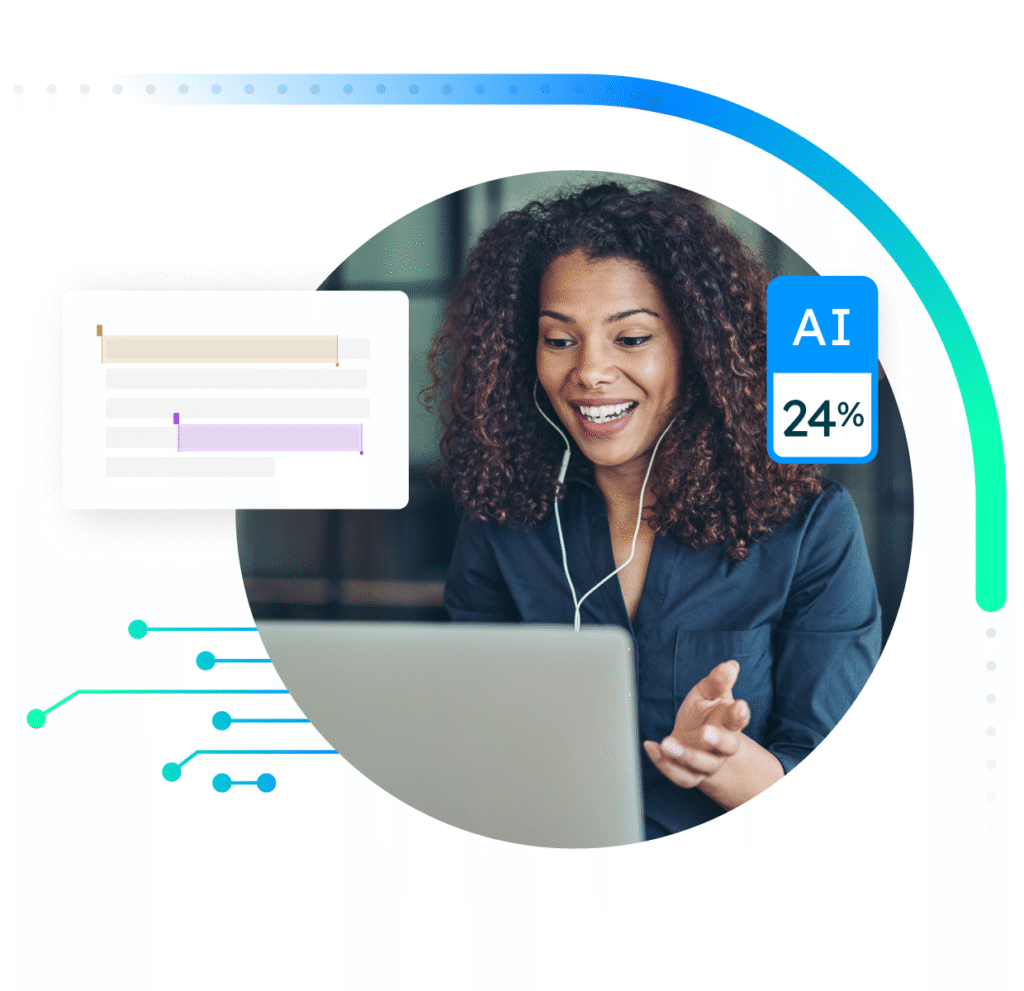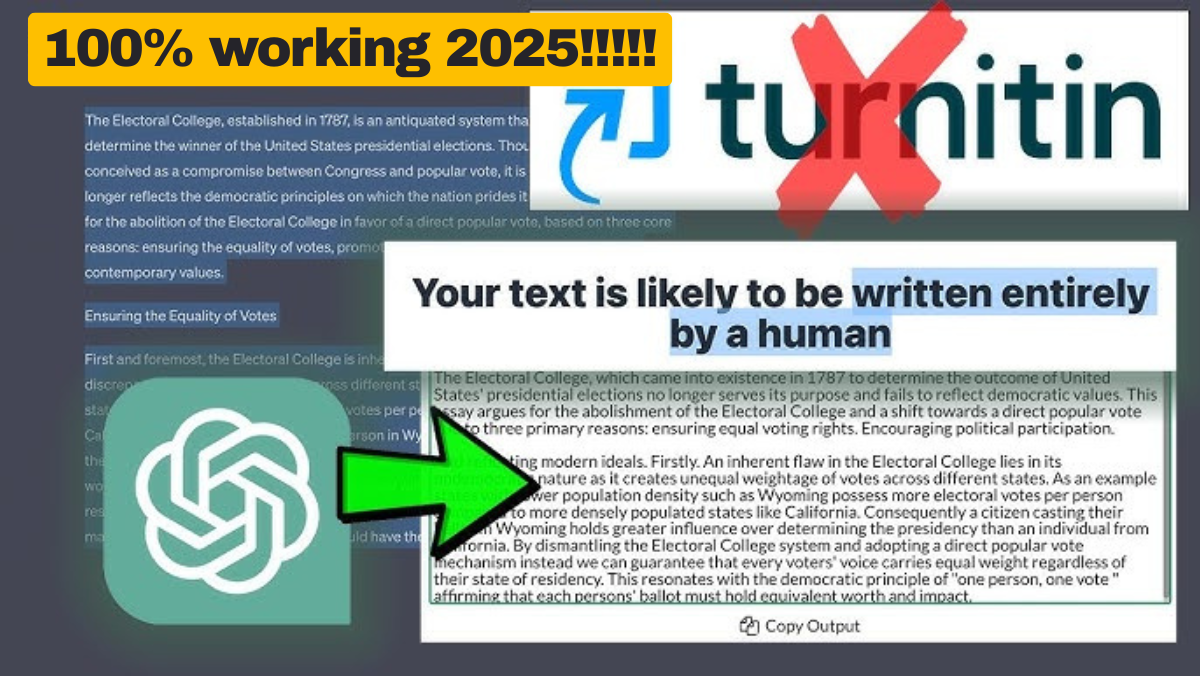In the ever-evolving landscape of academic integrity, bypassing AI detection has become a critical concern for students and professionals alike. With Turnitin’s sophisticated algorithms continuously advancing, understanding how to produce authentic, human-like content is more important than ever. This comprehensive guide explores the most effective strategies to bypass Turnitin AI detection while maintaining academic honesty and producing high-quality work.
Understanding Turnitin’s AI Detection Capabilities
Turnitin’s AI detection system has undergone significant advancements, making it one of the most sophisticated tools for identifying AI-generated content. Its algorithms analyze writing patterns, sentence structures, and linguistic features to distinguish between human and AI-authored work
In August 2025, Turnitin launched a groundbreaking “AI bypasser detection” feature specifically designed to identify content modified by AI humanizer tools. This system uses “cross-humanizer generalization” training to detect patterns characteristic of text processed through paraphrasing tools and synonym replacers.
- Understanding Turnitin’s AI Detection Capabilities
- Why Bypassing AI Detection Matters
- Top 10 Strategies to Bypass Turnitin AI Detection
- 1. Thorough Manual Rewriting
- 2. Incorporate Personal Insights and Experiences
- 3. Vary Sentence Structure and Length
- 4. Utilize Active Voice
- 5. Implement Strategic Citations
- 6. Leverage Advanced Paraphrasing Tools
- 7. Manual Editing and Proofreading
- 8. Add Visual Elements
- 9. Conduct Comprehensive Research
- 10. Use AI Detection Preview Tools
- Advanced Tools for Bypassing Detection
- Also Read:
- Ethical Considerations and Best Practices
- The Future of AI Detection and Evasion
- Frequently Asked Questions
- Conclusion
How Turnitin’s Detection Works:

- Pattern Recognition: Analyzes sentence structures, word choices, and phrasing patterns common in AI-generated content
- Database Comparison: Compares submissions against a massive database of academic papers, websites, and publications
- Semantic Analysis: Uses Natural Language Processing (NLP) to understand meaning beyond just vocabulary
- Statistical Analysis: Examines word distribution and frequency anomalies that reveal AI generation
Why Bypassing AI Detection Matters
The consequences of being flagged for AI-generated content can be severe, including:
- Academic penalties ranging from reduced grades to course failure
- Damage to academic reputation and standing
- Long-term impact on professional careers
- Erosion of trust between students and educators
However, it’s essential to distinguish between ethical adaptation of AI tools and academic dishonesty. The goal should be to use AI as a assistance tool while maintaining authentic voice and original thought.
Top 10 Strategies to Bypass Turnitin AI Detection
1. Thorough Manual Rewriting
The most effective approach is to completely rewrite AI-generated content in your own voice. This involves:
- Reading and comprehending the AI-generated text
- Setting it aside and expressing the ideas in your unique writing style
- Incorporating personal phrasing and sentence rhythms
- Avoiding direct copying of sentence structures
2. Incorporate Personal Insights and Experiences
AI cannot replicate genuine human experiences. Adding:
- Personal anecdotes related to the topic
- Unique perspectives based on your knowledge
- Reflections on how the material applies to real-world situations
- Critical analysis that demonstrates original thinking
3. Vary Sentence Structure and Length
AI writing often follows predictable patterns. To humanize your text:
- Mix short and long sentences to create natural rhythm
- Use different sentence types (simple, compound, complex)
- Avoid repetitive phrasing patterns
- Create organic flow between ideas
4. Utilize Active Voice
AI generators often overuse passive voice. Instead:
- Make subjects perform actions rather than being acted upon
- Create stronger, more direct statements
- Enhance clarity and engagement
Table: Comparison of Active vs. Passive Voice
| Passive Voice (AI-Friendly) | Active Voice (Human-Like) |
|---|---|
| The experiment was conducted by researchers | Researchers conducted the experiment |
| It was determined that the results indicated | We determined that the results indicated |
| The solution can be applied by professionals | Professionals can apply the solution |
5. Implement Strategic Citations
Proper citation not only avoids plagiarism but also reduces AI detection likelihood:
- Credit all sources appropriately using standard formats (APA, MLA, Chicago)
- Balance original thought with referenced material
- Use credible, diverse sources to demonstrate research depth
- Integrate quotations smoothly into your narrative
6. Leverage Advanced Paraphrasing Tools
While basic synonym replacers are easily detected, advanced tools like Ryne AI and GPTinf use:
- Semantic pattern randomization that mimics human inconsistency
- Multi-model architecture combining multiple language approaches
- Context-aware rewriting that preserves meaning while altering structure
- Academic voice preservation maintaining appropriate tone
7. Manual Editing and Proofreading
No tool replaces human review:
- Read aloud to identify awkward phrasing
- Check for flow and logical progression
- Ensure consistency in argument development
- Verify that citations match references
8. Add Visual Elements
Incorporating relevant:
- Images and graphics that support your arguments
- Tables that organize complex data
- Charts that visualize relationships
- Diagrams that explain processes
9. Conduct Comprehensive Research
AI detection decreases when content demonstrates:
- Depth of understanding from multiple sources
- Synthesis of ideas from varied perspectives
- Integration of recent developments in the field
- Critical engagement with conflicting viewpoints
10. Use AI Detection Preview Tools
Before submission, test your work with:
- Surfer AI detector
- Originality.ai
- GPTZero
- Turnitin’s preview features (if available)
Advanced Tools for Bypassing Detection
Ryne AI
This platform stands out for its:
- Semantic pattern randomization creating genuine variability
- Multi-model architecture avoiding single AI signatures
- Context-aware rewriting that reconstructs rather than paraphrases
- Academic voice preservation maintaining appropriate tone
Testing showed Ryne achieved 0% AI detection scores against Turnitin’s August 2025 update, while other tools were flagged at 67-72%
GPTinf
This tool offers:
- Non-AI based rewriting (doesn’t use AI to fix AI)
- Multi-detector testing against major detection systems
- Freeze keywords feature to preserve specific terminology
- Tiered pricing for different needs
Also Read:
Undetectable AI and WordAi
These platforms provide:
- AI-driven undetectability focused on bypassing detectors
- Diverse writing styles adaptation
- Sentence-level understanding for quality rewriting
- LSI keyword integration for uniqueness
Table: Comparison of AI Humanization Tools
| Feature | Ryne AI | GPTinf | Traditional Tools |
|---|---|---|---|
| Bypass Rate | ~85-100% | ~99% | 0-30% |
| Price Point | Premium | Mid-range | Variable |
| Citation Preservation | Yes | Limited | No |
| Multi-Language Support | 100+ languages | Limited | Limited |
| Sentence Reconstruction | Deep semantic | Surface-level | Synonym replacement |
Ethical Considerations and Best Practices
While bypassing AI detection is technically possible, it’s crucial to consider:
Academic Integrity
- Use AI as a supplemental tool rather than replacement for learning
- Develop your skills through the writing process
- Understand the material you’re presenting
- Maintain honesty about your process when required
Transparency
- Follow institutional guidelines regarding AI use
- Disclose AI assistance when mandated
- Use AI for brainstorming and drafting rather than final submission
- Focus on learning outcomes rather than just grades
Quality Assurance
- Ensure content accuracy regardless of generation method
- Maintain argument coherence throughout your work
- Fact-check all information from AI sources
- Proofread meticulously before submission
The Future of AI Detection and Evasion
As AI technology evolves, so do detection methods. Turnitin’s continued investment in algorithm improvements suggests that:
- Pattern recognition will become more sophisticated
- Cross-institutional collaboration will expand detection databases
- Real-time detection capabilities will improve
- Prevention technologies may integrate directly with writing platforms
The most sustainable approach is developing strong writing skills that naturally evade detection because they’re genuinely human.
Frequently Asked Questions
Can Turnitin detect AI-generated content that’s been paraphrased?
Yes, Turnitin’s August 2025 update specifically detects content processed through most paraphrasing tools. However, advanced systems like Ryne AI that use deep semantic reconstruction rather than surface-level paraphrasing can still bypass detection
Is using AI humanization tools considered cheating?
This depends on institutional policies. Many universities consider submitting AI-generated work as academic dishonesty. However, using AI for brainstorming, drafting, or editing may be permitted within certain guidelines. Always check your institution’s specific policies
How reliable are AI detection systems?
Current systems have approximately 9% false positive rates (flagging human work as AI), making them imperfect. Advanced humanization techniques show false negative rates above 80% (AI content passing as human)
What makes Ryne AI different from other humanizers?
Ryne uses multiple AI models working together to eliminate detectable patterns rather than create new ones. It focuses on semantic understanding and contextual rewriting rather than synonym replacement.
Can I check my work before submitting to Turnitin?
Several platforms offer AI detection previews, including Surfer AI detector, Originality.ai, and GPTZero. Some services even provide Turnitin score predictions
Conclusion
Bypassing Turnitin AI detection in 2025 requires more than simple paraphrasing or synonym replacement. As detection algorithms become increasingly sophisticated, successful evasion demands:
- Genuine content humanization through deep semantic restructuring
- Personal voice integration with unique insights and experiences
- Strategic use of advanced tools like Ryne AI that reconstruct rather than paraphrase
- Ethical consideration of academic integrity and learning objectives
The most effective approach combines advanced technology with authentic human engagement with the material. Rather than focusing solely on evasion, prioritize developing your writing skills and understanding your subject matter—these naturally produce work that passes AI detection because it’s genuinely human.
Remember, the goal of education isn’t merely to produce papers that bypass detection systems, but to develop knowledge and skills that serve you beyond the classroom. Use AI tools responsibly as aids to learning rather than replacements for it.
For more information on maintaining academic integrity while using AI tools, consult your institution’s guidelines or speak with academic advisors about appropriate AI use in your coursework.

















